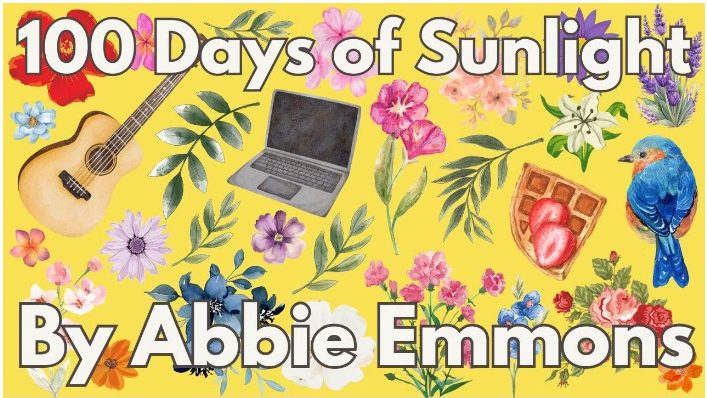*We sincerely apologize that this article was mistakenly credited to the incorrect writer in our Spring Edition and not to Selina Alipour Tabrizi.*
Since 2015, author Abbie Emmons has created a strong community for aspiring authors through her YouTube channel, garnering over 500,000 subscribers. On the channel, she offers advice on writing, editing and publishing. Thus, it was no surprise when her self-published debut novel, “100 Days of Sunlight,” earned massive success and praise. In her eagerly awaited debut, Emmons proves her advice effective through her engaging characters, powerful themes and a plot line that makes the novel impossible to put down.
Most romance books struggle with creating three-dimensional characters that are interesting on their own, often resulting in mere love interests that exist for the purpose of driving a plot forward. “100 Days of Sunlight,” however, creates incredible characters that the reader will fondly remember even after finishing the book. One of the novel’s protagonists is Tessa Dickinson, a sixteen-year-old girl who temporarily loses sight after an accident. She undergoes a heartwarming journey of independence despite her disability, as she fiercely resists being seen as helpless. Despite things seeming to spiral out of her control, towards the end of the novel, she learns to enjoy life despite her current state. Weston Ludovico, the other protagonist, is an amputee who aims to help Tessa get back on her feet by working as a typist for her poetry blog. By switching between Weston’s backstory, which narrates how he lost his legs, and the story’s current time, Emmons creates another character anyone can fall in love with.
Emmons also explores nuanced themes throughout her novel, making it more than just a quick, fun read and a memorable story. Tessa’s and Weston’s separate journeys throughout the book demonstrate resilience and teaches readers to keep moving forward despite how the world tries to knock them down. The book shares a touching message that it is okay to rely on others for help, which Tessa gradually learns as she overcomes her misbelief about the way others perceive her. Overall, the book remains realistic by creating flawed characters who experience various ups and downs while delivering a positive message.
“100 Days of Sunlight” is certainly not a high-stakes adventurous epic. One aspect of the book that is lacking is the simplicity and tight structure of the plot, which leads to the gradual predictability of the story. While it is still enjoyable, it does not push creative boundaries. Despite this flaw, “100 Days of Sunlight” is still incredible in the category of lighthearted, feel-good stories.
Throughout the book, Tessa and Weston, the other protagonist, are the ones to drive the course of the story, rather than being passive characters that the reader would forget about right after shuffling through a series of “exciting” events. The romance is a slow-burn, and while the book falls under the genre, the story is not simply limited to a relationship. Tessa and Weston’s affection for each other blooms over the time period they spend together, making the story even more enjoyable. The novel’s climax reveals both characters’ flaws, strengths and desires, further solidifying their dynamic. Every action the characters take is aligned with their personality, and no extra drama is added for “shock value,” making the book digestible and fun.
Emmons’ presence as an author and writing coach on YouTube was a primary cause of the success her novel received. Readers expected her work to have all the things she focused on the most when sharing advice: relatable characters, powerful themes and a memorable plot, and Emmons certainly delivered all three of those things with her incredible debut. Overall, “100 Days of Sunlight” is the perfect read to bring you some warmth on a rainy day.









